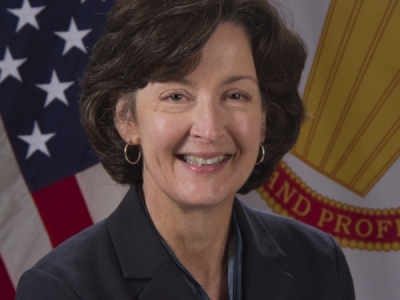
Posted on February 26, 2019
Photo By Richard Reihsmann | Dr. Jane McKee Smith, a senior scientist in the Coastal and Hydraulics Laboratory, is an elected member of the National Academy of Engineering
VICKSBURG, Miss. — Dr. Jane McKee Smith, a senior research scientist with the Coastal and Hydraulics Laboratory at the U.S. Army Engineer Research and Development Center, has been elected to the National Academy of Engineering. Election to the Academy is one of the highest professional distinctions bestowed to an engineer.
This is an impressive career accomplishment, said Dr. David Pittman, Director of the ERDC. Only four other ERDC or Waterways Experiment Station professionals have served as distinguished members of the Academy.
Smith was recognized for her research breakthroughs in hydrodynamic phenomena and her leadership in coastal engineering research and development resulting in improved infrastructure resilience. Her research focuses on nearshore waves and currents, wave-current interaction, shallow-water wave processes and storm surge.
“Jane also holds the distinction of being the first female Academy member from the U.S. Army Corps of Engineers,” said Pittman.
Smith is the co-developer of the Steady-State Spectral Wave Model, a numerical model that is used throughout the world for coastal project planning and design. She was the wave modeling lead investigator for the Interagency Performance Evaluation Task Force evaluation of Hurricane Katrina and also led development of a system to quickly forecast hurricane waves, storm surge and inundation for the Hawaiian Islands.
She has more than 200 professional publications to her credit, and serves as chair of the American Society of Civil Engineers Coastal Engineering Research Council and on the editorial boards of “Coastal Engineering” and the “Journal of Waterway, Port, Coastal and Ocean Engineering.” She is an adjunct professor at Mississippi State University and serves on the PhD Committees at MSU, the University of Florida, Louisiana State University and Texas A&M University.
“It is a great honor to be elected to the National Academy of Engineering,” said Smith. “I’m very thankful for the opportunities that ERDC has given me to research waves and coastal processes, solve engineering challenges, collaborate with the international community, and most of all, work with both great mentors and colleagues. Engineering is all about solving problems, and it is very rewarding to focus on solving problems with national and international impact as part of the Corps of Engineers team.”
The NAE is a private, independent, nonprofit institution that provides engineering leadership in service to the nation. It consists of more than 2,000 peer-elected members and foreign members, who are among the world’s most accomplished engineers. They provide the leadership and expertise for numerous projects focused on the relationships between engineering, technology and the quality of life.
The ERDC helps solve the nation’s most challenging problems in civil and military engineering, geospatial sciences, water resources, and environmental sciences. As one of the most diverse engineering and scientific research organizations in the world, ERDC conducts research and development in support of the Soldier, military installations, and the Corps of Engineers’ civil works mission, as well as for other federal, state and municipal authorities. As part of the ERDC, CHL addresses an entire spectrum of water resource challenges in groundwater, watersheds, rivers, reservoirs, estuaries, harbors, coastal inlets and wetlands.
Source: dvidshub.net





